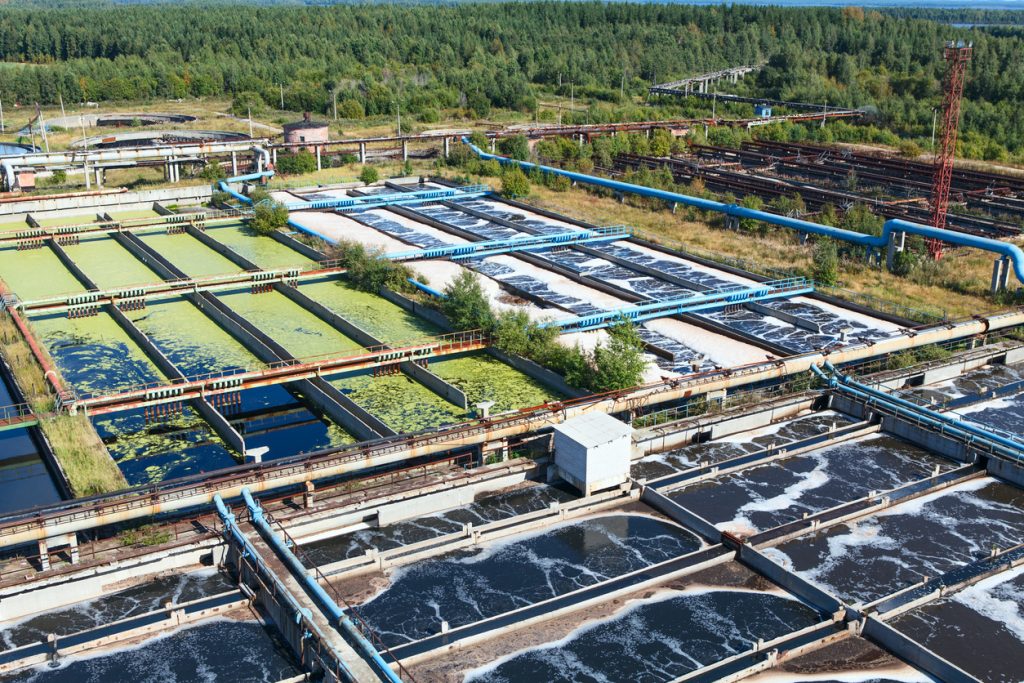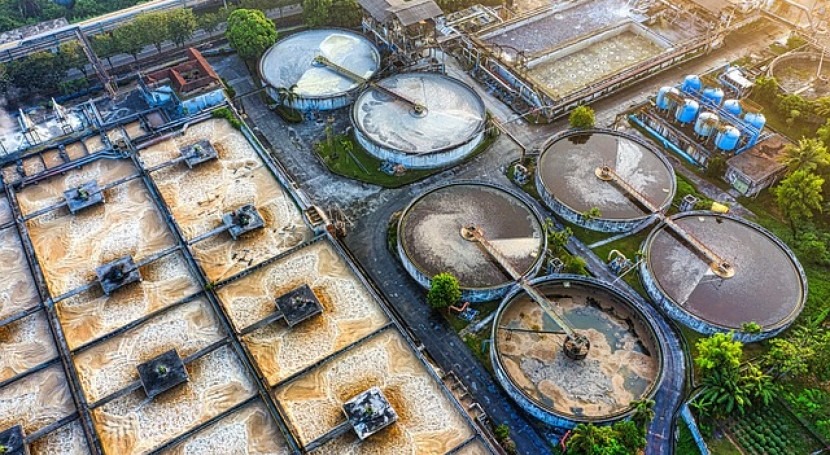Vital Action In Community Waste Water Treatment Plants
Wiki Article
Optimizing Drainage Treatment Processes: Approaches for Improved Water High Quality and Source Recovery
In the realm of wastewater therapy, the quest for enhancing efficiency and sustainability with procedure optimization is a recurring quest that holds enormous significance. By sharpening in on strategies customized to elevate water high quality while concurrently taking advantage of valuable sources, therapy plants can attend to pushing ecological issues while opening economic advantages. From cutting-edge technologies to innovative resource recovery techniques, the landscape of wastewater treatment is progressing quickly. As we explore the ins and outs of optimizing these processes, a world of opportunities emerges that guarantees not just cleaner water but likewise a more lasting future.Value of Refine Optimization
Optimizing drainage therapy processes through thorough process optimization is crucial for making the most of efficiency and making sure environmental sustainability. By fine-tuning each action of the treatment process, from first consumption to final discharge, water treatment facilities can attain higher levels of impurity removal, lower energy consumption, and minimize the generation of waste byproducts. Process optimization entails analyzing crucial efficiency indicators, such as hydraulic retention times, sludge retention times, and nutrient degrees, to identify locations for renovation and execute targeted solutions.Effective procedure optimization not only enhances the general efficiency of waste water treatment plants but also adds to cost savings and regulative compliance. By enhancing procedures, drivers can achieve greater treatment capacities without the requirement for significant framework financial investments. In addition, boosted treatment performance results in cleaner effluent discharge, minimizing the ecological influence on receiving water bodies and environments.

Advanced Therapy Technologies
In the world of waste water treatment, the execution of sophisticated treatment technologies plays an essential function in boosting the general performance and performance of the treatment processes. These sophisticated modern technologies supply cutting-edge services to resolve intricate pollutants present in wastewater streams, ensuring the removal of toxins to meet rigorous water quality criteria. Advanced therapy processes such as membrane layer bioreactors, ozonation, advanced oxidation procedures, and turn around osmosis enable the complete removal of pollutants, including arising contaminants like drugs and individual treatment products.Moreover, these innovations assist in source recovery by removing important products such as phosphorus, nitrogen, and energy from the wastewater. Advanced nutrient elimination technologies can recover phosphorus and nitrogen for reuse in farming plant foods, while energy recovery systems like anaerobic digestion can harness biogas for electrical power generation. By including innovative therapy modern technologies right into wastewater therapy plants, drivers can enhance water high quality, decrease environmental influence, and relocate towards a more resource-efficient and lasting technique to wastewater administration.
Source Recovery Strategies
Resource healing strategies in wastewater therapy procedures play a crucial function in maximizing the utilization of useful sources contained within wastewater streams. These strategies purpose to essence and reuse materials such as nutrients, energy, and water from the wastewater, turning what was once taken into consideration waste right into useful sources. One usual source healing strategy is the removal of nutrients like phosphorus and nitrogen from wastewater for reuse as plant foods or in commercial procedures. Additionally, power recuperation approaches such as anaerobic digestion and biogas manufacturing assistance harness the power capacity of organic issue in wastewater to generate power or warmth.
Water recovery methods, such as membrane layer modern technologies and progressed filtration systems, make it possible for the treatment and reuse of water for non-potable applications like irrigation or industrial processes. By implementing source recuperation strategies in wastewater therapy plants, not just can valuable sources be conserved and recycled, however the overall sustainability and effectiveness of the treatment procedure can be considerably boosted. As the emphasis on source scarcity and ecological sustainability proceeds to expand, the significance of incorporating resource recuperation techniques into wastewater therapy procedures ends up being increasingly obvious.
Sustainable Practices in Wastewater Treatment
Carrying out lasting practices in wastewater treatment centers is important for improving ecological stewardship and long-term functional effectiveness. Sustainable practices in wastewater treatment encompass an array of approaches intended at minimizing the environmental effect of treatment procedures while making best use of source healing. One essential aspect of sustainable wastewater treatment is the execution of energy-efficient technologies to minimize the carbon footprint of therapy plants. This can consist of the use of renewable resource sources such as solar or wind power, along have a peek at this site with the optimization of existing processes to decrease power usage.Additionally, the fostering of sophisticated treatment innovations that advertise water reuse and recycling plays an essential duty in lasting wastewater management. By dealing with wastewater to a high requirement, it can be repurposed for numerous non-potable applications, such as watering, commercial processes, and also drinkable water production in many cases. This not only saves useful freshwater sources yet likewise reduces the quantity of effluent discharged into the environment.

Case Studies on Effective Optimization
As wastewater therapy facilities increasingly concentrate on lasting techniques, real-world situation researches showcasing effective optimization techniques serve as vital models for market innovation. One such case research focuses on the application of advanced nutrient elimination technologies in a community wastewater therapy plant. By integrating organic nutrient removal processes and maximizing operational specifications, the facility accomplished considerable reductions in nitrogen and phosphorus degrees discharged right into obtaining waters, inevitably boosting total water quality.Another significant study includes the assimilation of anaerobic food digestion systems in an industrial wastewater therapy plant to improve energy healing article source and source performance (Waste Water Treatment). With this the food digestion of natural waste materials, the facility not just generated biogas for power manufacturing however likewise lowered the volume of sludge calling for disposal. This dual benefit not only boosted the plant's sustainability efficiency however also led to price savings
These effective optimization techniques demonstrate the possibility for wastewater therapy centers to accomplish both environmental and financial benefits with reliable procedures and cutting-edge techniques. By learning from these situation research studies, market professionals can even more enhance their very own procedures to improve water quality and resource recovery.
Verdict
Finally, optimizing drainage treatment processes with sophisticated modern technologies, source recuperation techniques, and lasting methods is vital for improving water quality and making best use of resource healing. Waste Water Treatment. Case researches have demonstrated successful implementation of optimization strategies in different wastewater therapy facilities. By proceeding to focus on process optimization, we can guarantee effective and effective therapy of wastewater, inevitably leading to a much more environmentally friendly and lasting approach to taking care of water resourcesBy fine-tuning each action of the therapy process, from preliminary intake to final discharge, water treatment centers can achieve higher levels of impurity elimination, reduce energy usage, and reduce the generation of waste byproducts.In the world of waste water therapy, the execution of sophisticated treatment technologies plays an essential function in boosting the overall performance and efficiency of the therapy procedures. By including sophisticated treatment innovations right into wastewater therapy plants, drivers can enhance water high quality, decrease ecological influence, and move in the direction of a much more resource-efficient and lasting technique to wastewater management.
By implementing source healing methods in wastewater treatment plants, not just can valuable resources be conserved and recycled, but the general sustainability and effectiveness of the treatment procedure can be significantly boosted. Lasting practices in wastewater treatment encompass a variety of methods aimed at reducing the environmental impact of therapy processes while making the most of resource recovery.
Report this wiki page